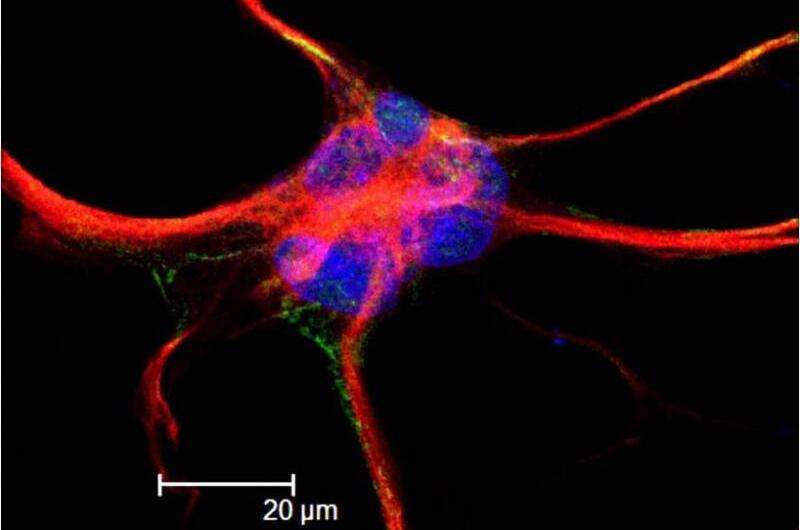

A drop in oxygen levels, even when temporary, can be critical to brain cells. This explains why the brain is equipped with oxygen sensors. In a study published in Current Biology, researchers from Japan and the United States report finding a new oxygen sensor in the mouse brain.
Cells begin to die in oxygen-deprived conditions, with the biggest oxygen consumers—such as the cells in the brain—being the first to go. In response, the brain must respond quickly to force the body to breathe more.
Astrocytes, supporting cells that in part modulate the activity of neurons responsible for breathing, respond to low oxygen levels by highly expressing the protein TRPA1. When there is not enough oxygen in the brain, this expression on the surface of astrocytes induces the secretion of gliotransmitters that cause the neuronal modulation for breathing.
“Much research in the last decade has indicated that astrocytes act as oxygen sensors, but we know very little about the actual molecular changes that take place,” explains corresponding author Yasuo Mori.
Although astrocytes are located in the central nervous system, they differ from neurons in that they respond to neuronal injury and provide a support system for neurons and synaptic connections.
“We previously found that TRPA1 proteins can sense hypoxia and hyperoxia, in peripheral neurons,” Mori continues, explaining the team’s decision to probe whether they perform a similar function in astrocytes.
“Interestingly, the sequestering of TRPA1 can only occur in the presence of oxygen at normal or surplus levels; in hypoxia, prolyl hydroxylase activity is suppressed, and TRPA1 is expressed on the astrocyte surface, not in the cytoplasm.”
Once at the plasma membrane, TRPA1 allows the astrocytes to accumulate calcium ions, causing the cells to secrete ATP, thereby modulating respiratory neurons. This has been shown to help more mice breathe.
Once oxygen levels recover, so too does prolyl hydroxylase, returning TRPA1 from the membrane to the cytoplasm.
“While the functions of brain cells seem to depend on their locations in the brain, we note that other brain cells will use different mechanisms to recover oxygen,” concludes Nakao.
In Huntington’s disease, astrocytes cooperate with neurons in the brain
Makoto Uchiyama et al, O2-Dependent Protein Internalization Underlies Astrocytic Sensing of Acute Hypoxia by Restricting Multimodal TRPA1 Channel Responses, Current Biology (2020). DOI: 10.1016/j.cub.2020.06.047
Kyoto University
Citation:
Astroglial channel protein expression stimulates breathing in oxygen-deprived mice (2022, May 30)
retrieved 30 May 2022
from https://phys.org/news/2022-05-astroglial-channel-protein-oxygen-deprived-mice.html
This document is subject to copyright. Apart from any fair dealing for the purpose of private study or research, no
part may be reproduced without the written permission. The content is provided for information purposes only.